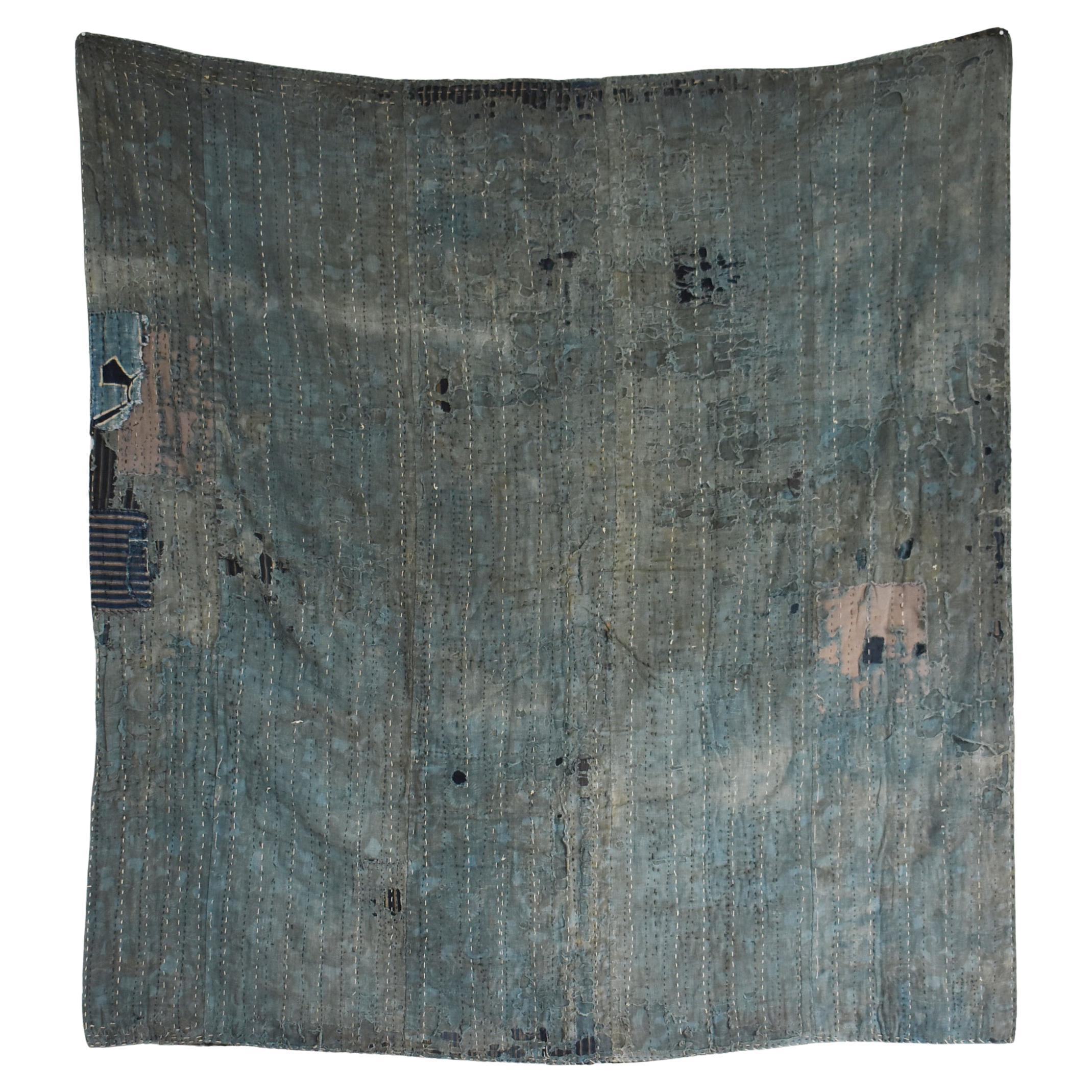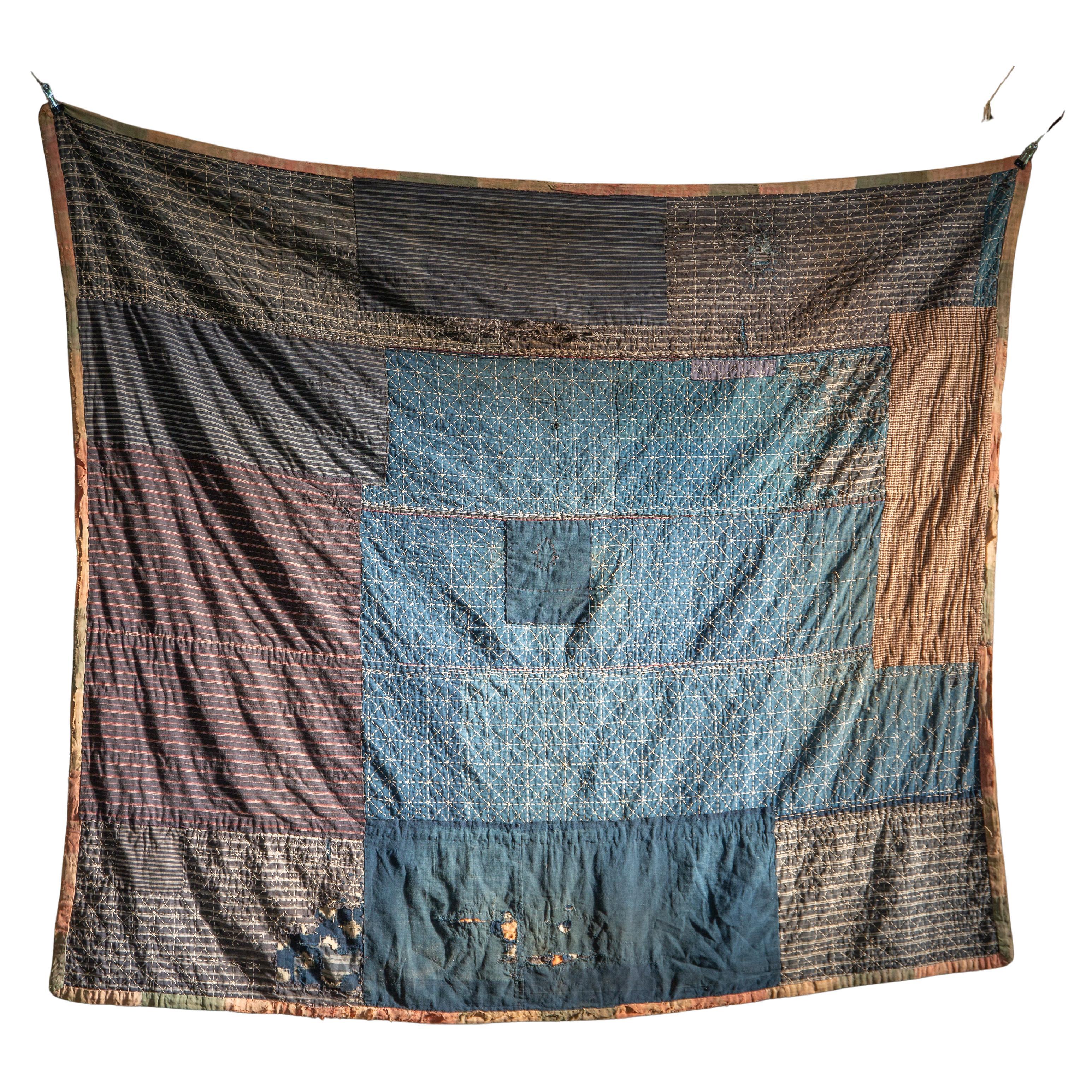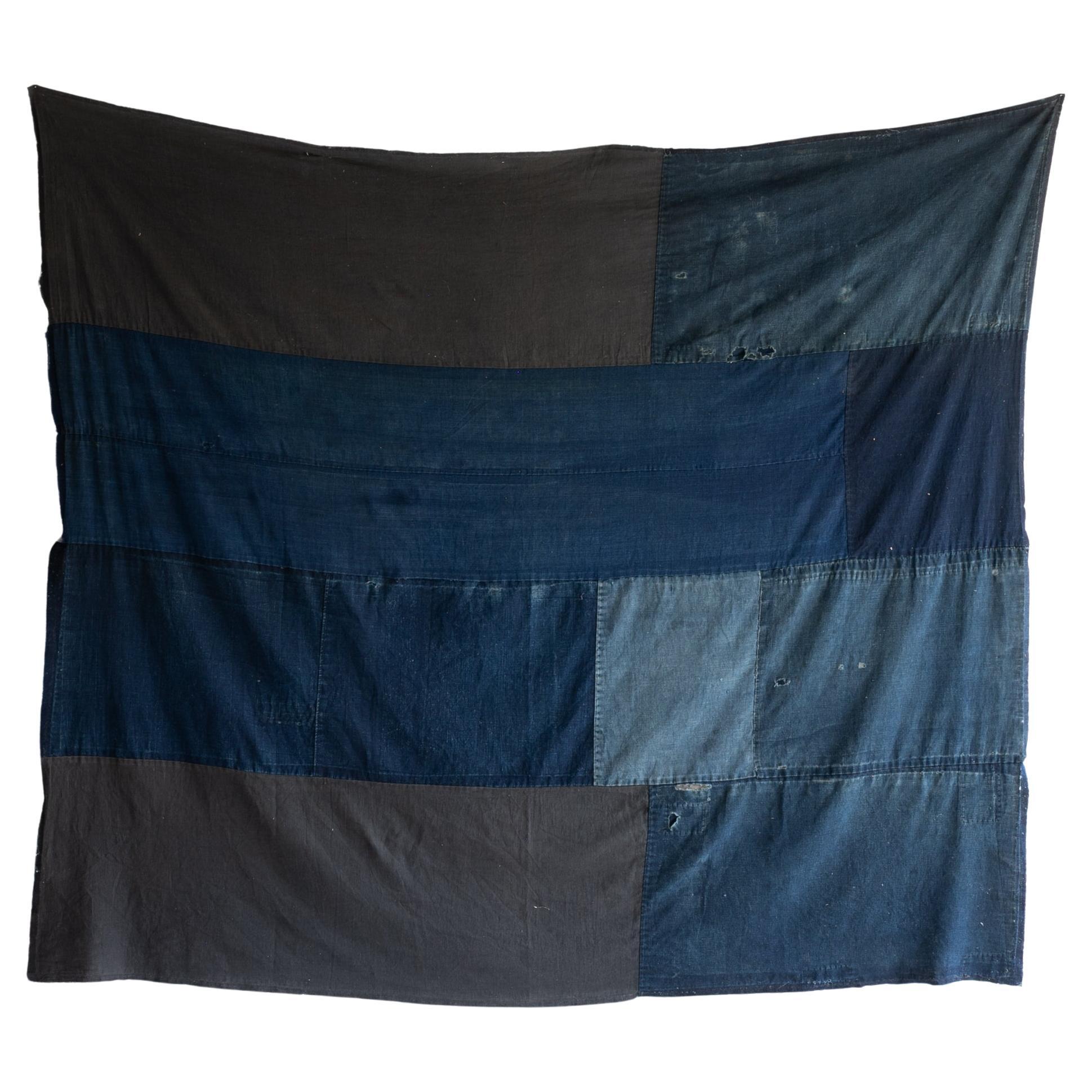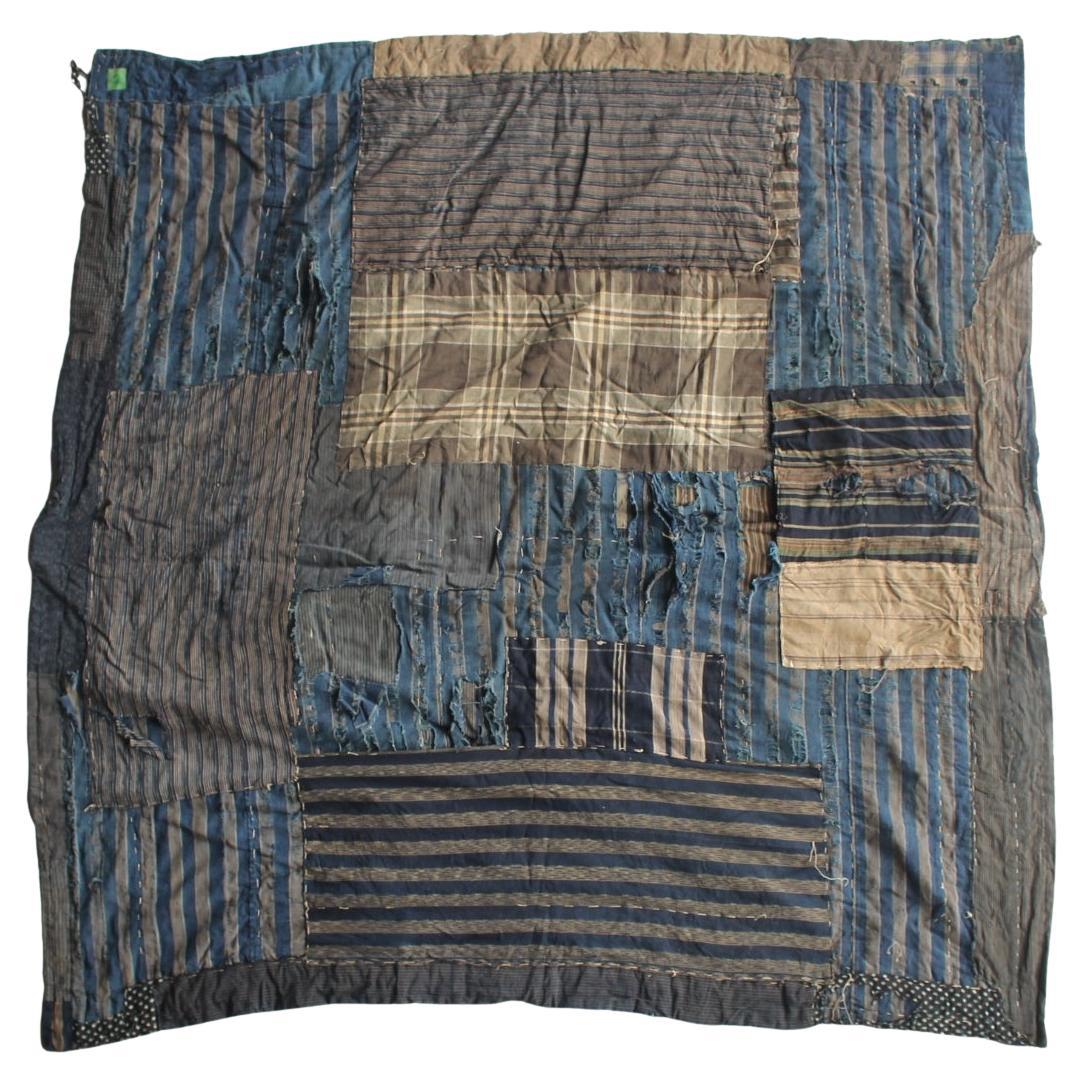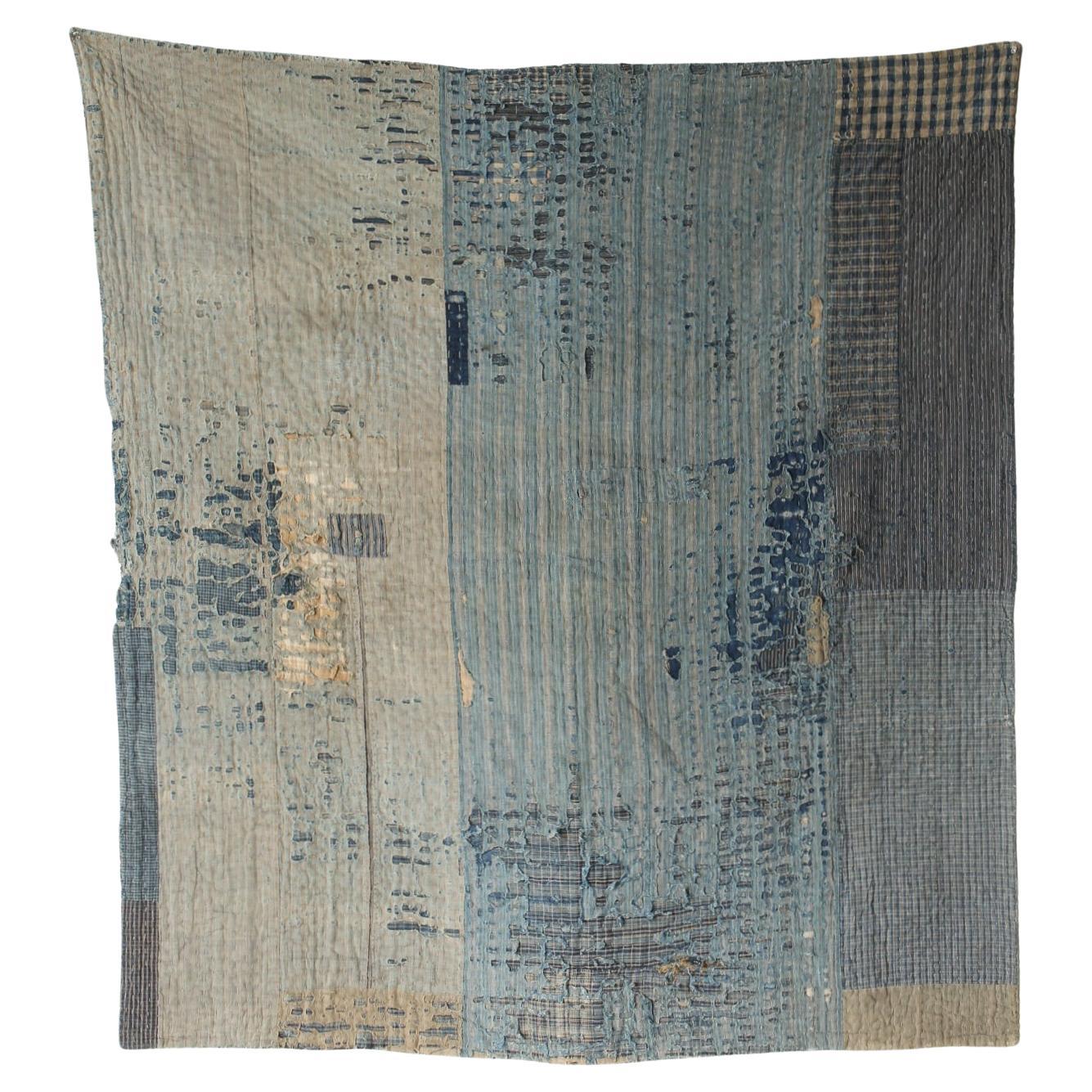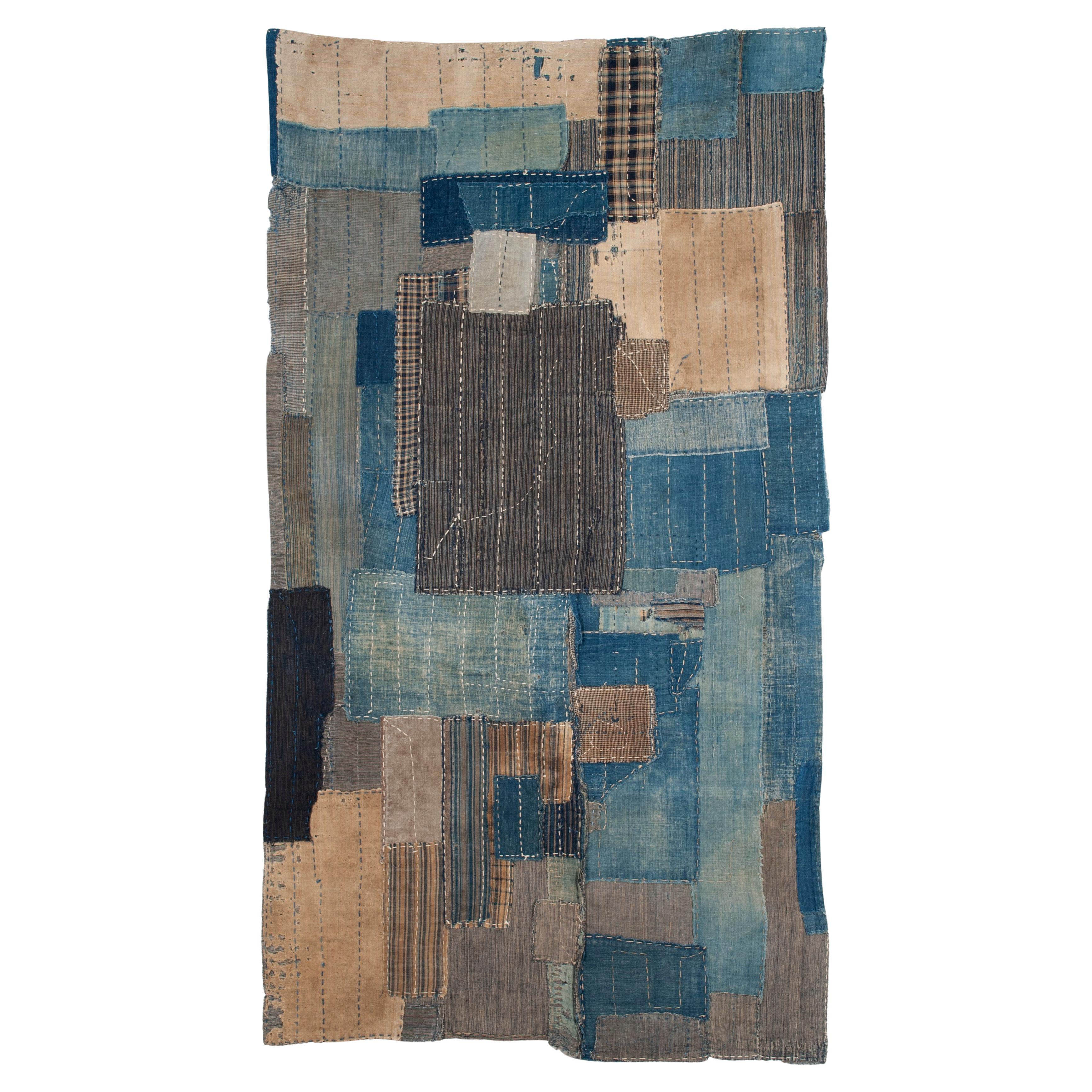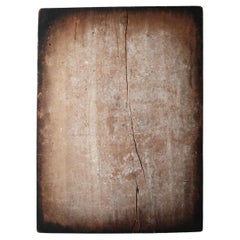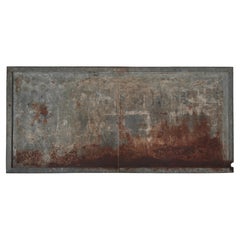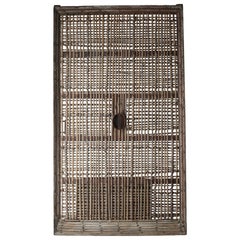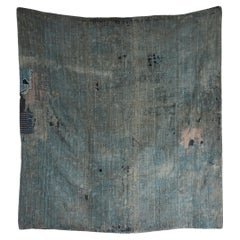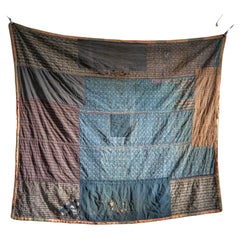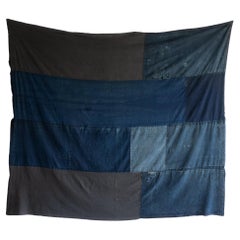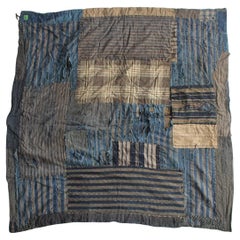Items Similar to Early Showa Period Nambu Sakiori (with Indigo-Dyed Cotton Warp) / Rag Tapestry
Want more images or videos?
Request additional images or videos from the seller
1 of 14
Early Showa Period Nambu Sakiori (with Indigo-Dyed Cotton Warp) / Rag Tapestry
$2,000
£1,518.39
€1,740.03
CA$2,838.74
A$3,096.34
CHF 1,626.59
MX$37,459.40
NOK 20,349.15
SEK 19,213.65
DKK 12,988.13
About the Item
This is a piece of Nambu sakiori made in the early Showa period and discovered in Iwate Prefecture.
Nambu sakiori is a traditional Japanese recycled textile technique developed in the southern region of Aomori and northern Iwate Prefecture. Old clothing and cloth were torn into narrow strips and reused as weft yarn, then woven anew into practical textiles such as garments and floor coverings. It was a vital form of winter handcraft, mainly carried out by women during the agricultural off-season, reflecting a way of life that prioritized resourcefulness and warmth in harsh climates.
In this example, part of the warp consists of hand-spun, indigo-dyed cotton yarn, which suggests the piece dates from an earlier time. The indigo’s hue and the texture of the fibers display a character unique to hand-spun yarns, quite unlike machine-spun threads.
The weft is composed of various torn fabric strips, creating a layered and textured surface that embodies the rustic and dynamic quality characteristic of sakiori.
The reverse side is patched with pieces of indigo-striped cotton and kasuri fabric, likely added for reinforcement or insulation.
Weighing approximately 3.7 kilograms, this is a particularly thick and sizable example of sakiori, indicating its use as a functional textile.
Size
162×177cm
- Dimensions:Height: 69.69 in (177 cm)Width: 63.78 in (162 cm)Depth: 0.4 in (1 cm)
- Style:Showa (Of the Period)
- Materials and Techniques:
- Place of Origin:
- Period:
- Date of Manufacture:Circa1926
- Condition:Wear consistent with age and use.
- Seller Location:Iwate-gun Shizukuishi-cho, JP
- Reference Number:1stDibs: LU9601246252132
About the Seller
4.9
Platinum Seller
Premium sellers with a 4.7+ rating and 24-hour response times
Established in 2020
1stDibs seller since 2023
89 sales on 1stDibs
Typical response time: 2 hours
- ShippingRetrieving quote...Shipping from: Iwate-gun Shizukuishi-cho, Japan
- Return Policy
Authenticity Guarantee
In the unlikely event there’s an issue with an item’s authenticity, contact us within 1 year for a full refund. DetailsMoney-Back Guarantee
If your item is not as described, is damaged in transit, or does not arrive, contact us within 7 days for a full refund. Details24-Hour Cancellation
You have a 24-hour grace period in which to reconsider your purchase, with no questions asked.Vetted Professional Sellers
Our world-class sellers must adhere to strict standards for service and quality, maintaining the integrity of our listings.Price-Match Guarantee
If you find that a seller listed the same item for a lower price elsewhere, we’ll match it.Trusted Global Delivery
Our best-in-class carrier network provides specialized shipping options worldwide, including custom delivery.More From This Seller
View AllJapanese Antique Bamboo Door / Wall Decoration / 1868-1912s / Wabi-Sabi
Located in Iwate-gun Shizukuishi-cho, Iwate Prefecture
This is a wall decoration using an old Japanese door.
It is thought to date from the Edo to Meiji period.
Originally it was a very heavy door with earth and plaster on the surface,...
Category
Antique Late 19th Century Japanese Meiji Doors and Gates
Materials
Iron
Japanese Antique Wooden Board / Wall Decoration Abstract Art / Wabi-Sabi
Located in Iwate-gun Shizukuishi-cho, Iwate Prefecture
This is an old Japanese workboard.
It was called "Mochiita" and was used as a workbench for kneading flour.
It seems to be around the Meiji period.
The board is thought to be pine...
Category
Antique Late 19th Century Japanese Meiji Decorative Art
Materials
Wood
Japanese Antique Tin Plate Art / Wall Decoration / Wabi-sabi
Located in Iwate-gun Shizukuishi-cho, Iwate Prefecture
This is an old Japanese tin panel.
The rust caused by natural aging is expressed like art.
The exact purpose is unknown, but it seems that it was originally used in a place where fi...
Category
Antique Early 1900s Japanese Showa Decorative Art
Materials
Tin
Japanese Antique Bamboo Door / Wall Decoration / 1868-1912s / Wabi-Sabi
Located in Iwate-gun Shizukuishi-cho, Iwate Prefecture
This is a wall decoration using an old Japanese door.
It is thought to date from the Edo to Meiji period.
Originally it was a very heavy door with earth and plaster on the surface,...
Category
Antique Mid-19th Century Japanese Edo Doors and Gates
Materials
Iron
Japanese Old Iron Frame Of Winnow / Wall Decoration / Wabi-sabi Mingei
Located in Iwate-gun Shizukuishi-cho, Iwate Prefecture
This is an old Japanese winnowing basket's iron frame.
Winnowing basket is a single-mouthed or round-plate-shaped folk utensils used for sorting, transporting, and drying grains.
I...
Category
Mid-20th Century Japanese Showa Decorative Art
Materials
Iron
Japanese Antique Exhibition Table / Wall Decoration / 1868-1912s / Wabi-sabi
Located in Iwate-gun Shizukuishi-cho, Iwate Prefecture
This is an old Japanese wooden work board.
The wood is cedar, and due to long-term use, the black color around the edges remains, and the color has peeled off only in the middle. Th...
Category
Antique Late 19th Century Japanese Meiji Antiquities
Materials
Wood, Cedar
You May Also Like
Japanese Antique "BORO" 1800s-1860s / Rag Tapestry Patchwork Textile Wabisabi
Located in Chōsei District Nagara, JP
This is an old Japanese BORO, dating back to the late Edo period (1800s–1860s). It is an extremely valuable textile that has been carefully preserved and passed down to the present d...
Category
Antique Mid-19th Century Japanese Edo Tapestries
Materials
Fabric
Antique Japanese Indigo Boro textile rug w/ Sashiko stitching wabi sabi object
Located in 常陸大宮市, JP
From Tohoku area, Japan.
Antique indigo Boro textile with Sashiko stitching , probably used as Kotatsu Futon (Thick blanket for brazier table) estimate from the size & condition. 3 ...
Category
Early 20th Century Japanese Folk Art Tapestries
Materials
Cotton, Linen
Japanese Antique Rag "BORO" 1800s-1860s / Abstract Art Wabi Sabi
Located in Sammu-shi, Chiba
This is an exceptional example of a Japanese *BORO* textile, dating from the late Edo period (1800s–1860s). Carefully preserved over generations, it embodies both the resourcefulness...
Category
Antique Mid-19th Century Japanese Edo Tapestries
Materials
Fabric
Boro2 Japanese Antiques Primitive Art BORO Indigo-dyed Old Cloth patchwork
Located in Niiza, JP
Material: cotton
Width 1650 x Height 1700 x Depth 10 mm (about) weight 4 kg
estimate Packaging (It will be rolled or folded and shipped in bubble wrap and cardboard.)
45 cm x 50 cm x...
Category
Antique 19th Century Japanese Textiles
Materials
Cotton
Boro0 Japanese Antiques Primitive Art BORO Indigo-dyed patchwork Old Cloth
Located in Niiza, JP
Material: cotton
Width 1550 x Height 1700 x Depth 10 mm (about) weight 5 kg
estimate Packaging (It will be rolled or folded and shipped in bubble wrap and cardboard.)
50cm x 50cm x...
Category
Antique Early 19th Century Japanese Textiles
Materials
Cotton
Antique Japanese Recycled Boro Patchwork Futon Cover
Located in Point Richmond, CA
Antique Japanese Recycled Boro Patchwork Futon Cover
This indigo-dyed patchwork boro futon cover is a physical testimony to the determination and resourcefulness of those living in ...
Category
Antique Late 19th Century Japanese Meiji Tribal Art
Materials
Cotton
